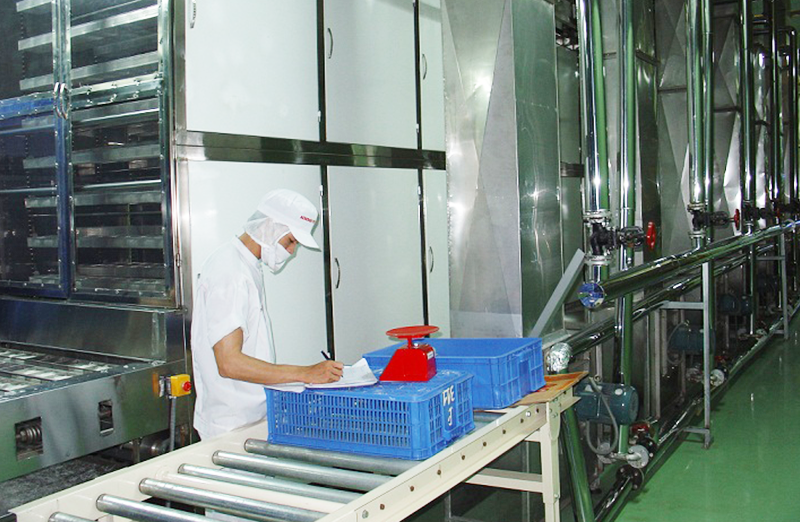Email: [email protected]
 2024.08.19
2024.08.19
 Industry News
Industry News
Humidity:
Ingredient Handling: Moisture Absorption: High humidity levels can cause flour and other dry ingredients to absorb excess moisture from the air. This absorption can lead to changes in the dough’s consistency, making it more difficult to achieve the desired texture and uniformity. For example, flour may become clumpy, affecting the homogeneity of the dough mixture. Mixing Efficiency: Variations in ingredient moisture can disrupt the mixing process, potentially leading to inconsistent dough consistency and affecting the overall quality of the noodles produced.
Noodle Quality: Texture and Stickiness: Excess moisture can compromise the texture of the dried noodles, resulting in a product that is less crisp or more prone to sticking together. This can diminish the appeal and quality of the final product, which may be especially critical for instant noodles or specialty varieties.
Shelf-Life: Increased moisture content can reduce the shelf-life of the noodles by fostering an environment conducive to microbial growth and spoilage. This can impact food safety and increase the need for preservatives or specialized packaging.
Machine Parts: Corrosion and Rust: Persistent high humidity can accelerate the rusting and corrosion of machine components, particularly those made of metal. This can lead to reduced mechanical efficiency, increased wear and tear, and potentially costly repairs or replacements. Maintenance Challenges: Rust and corrosion can also complicate routine maintenance procedures and require more frequent interventions to ensure smooth operation.
Drying Efficiency: Extended Drying Times: In high-humidity conditions, the drying process may be less efficient, necessitating extended drying times or supplementary drying systems to achieve the desired moisture content in the noodles. This can increase energy consumption and operational costs.Inconsistent Drying: High humidity can also lead to uneven drying, resulting in variations in noodle texture and quality.
Temperature:
Ingredient Processing: Dough Consistency: Temperature variations can significantly impact the behavior of the dough during processing. High temperatures can cause the dough to become too soft or tacky, while low temperatures can make it overly stiff, impacting its extrudability and processing characteristics. Machine Calibration: Machines that operate at optimal temperatures are calibrated for specific processing conditions. Deviations from these conditions can lead to performance issues, such as inconsistent dough formation or extrusion.
Noodle Quality: Drying Process: Temperature plays a critical role in the drying process. Excessively high temperatures can lead to rapid drying, potentially causing the noodles to become brittle or unevenly cooked. Conversely, low temperatures can result in inadequate drying, leading to a product with higher moisture content and compromised texture.
Product Uniformity: Temperature inconsistencies during drying can cause variations in noodle quality, impacting the final product's texture, color, and overall appeal.
Machine Performance: Component Efficiency: Machines designed for specific temperature ranges may experience decreased efficiency if those temperatures are not maintained. Overheating can lead to the degradation of sensitive components, while excessive cooling may impair the machine’s functionality. Operational Stability: Machines operating outside their intended temperature ranges may experience performance issues such as fluctuating speeds, inconsistent processing results, and increased likelihood of mechanical failures.
INSTANT RICE NOODLE/DRIED RICE NOODLE PRODUCTION LINE
